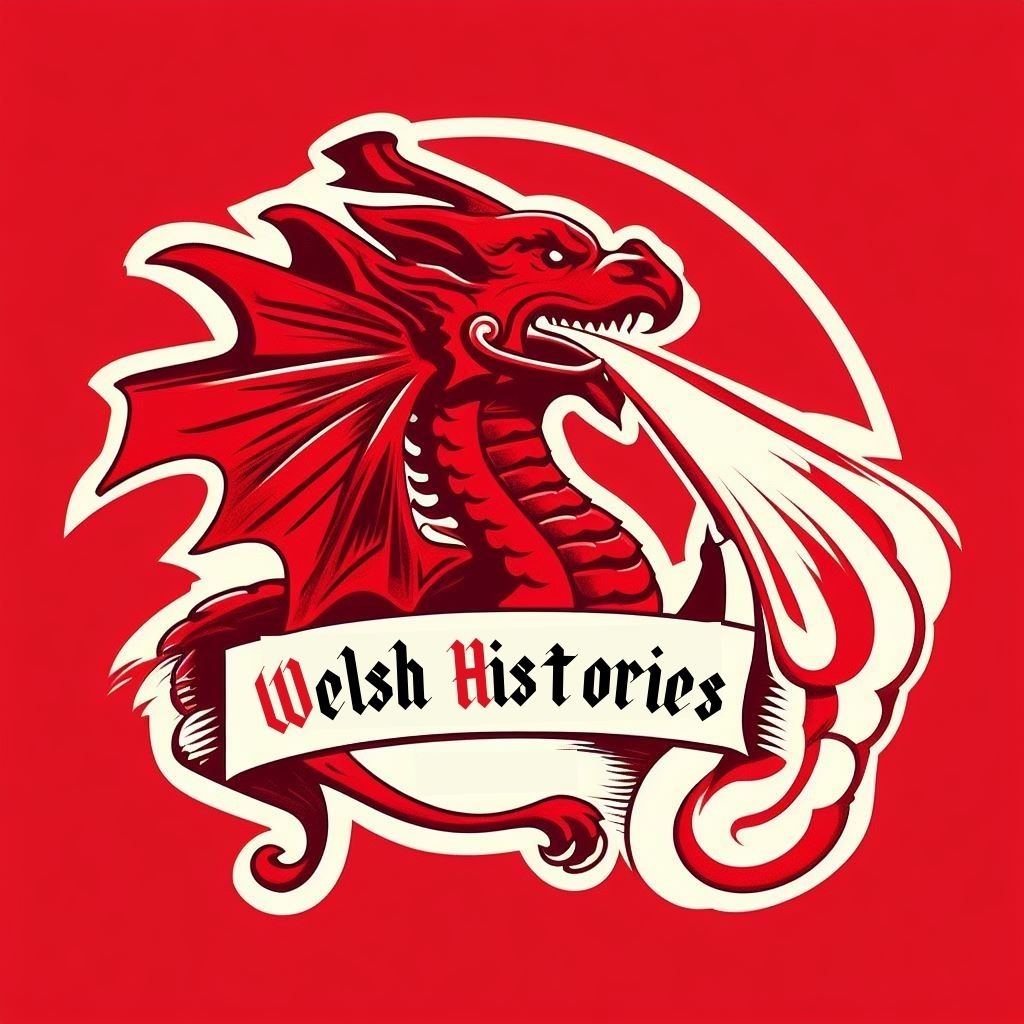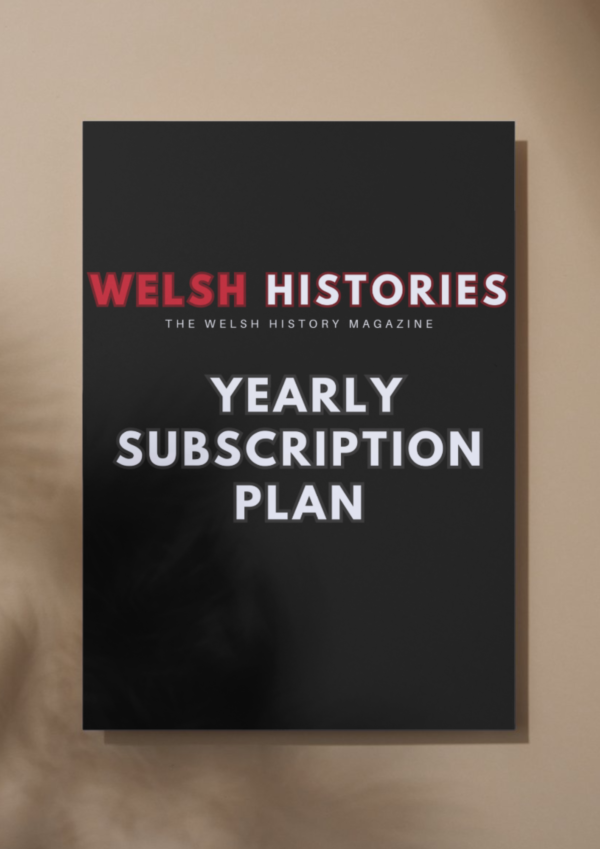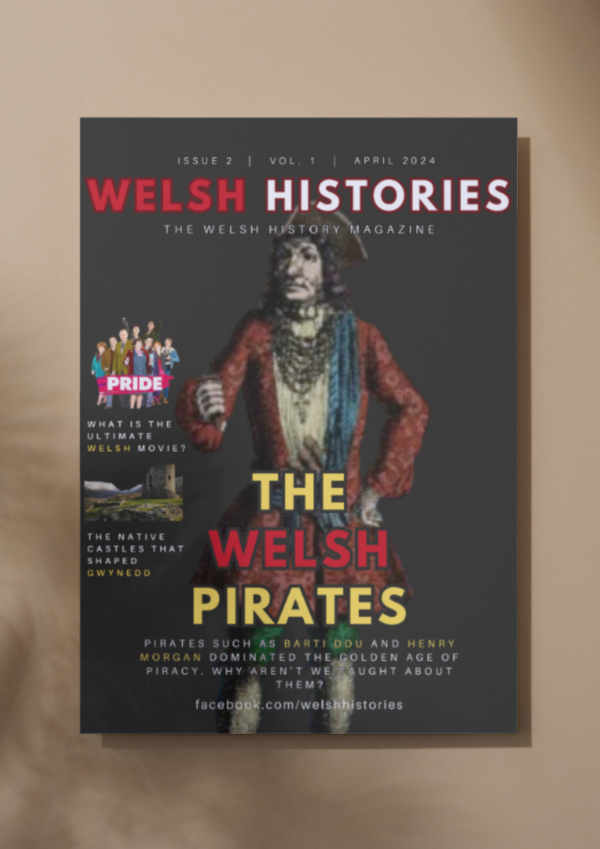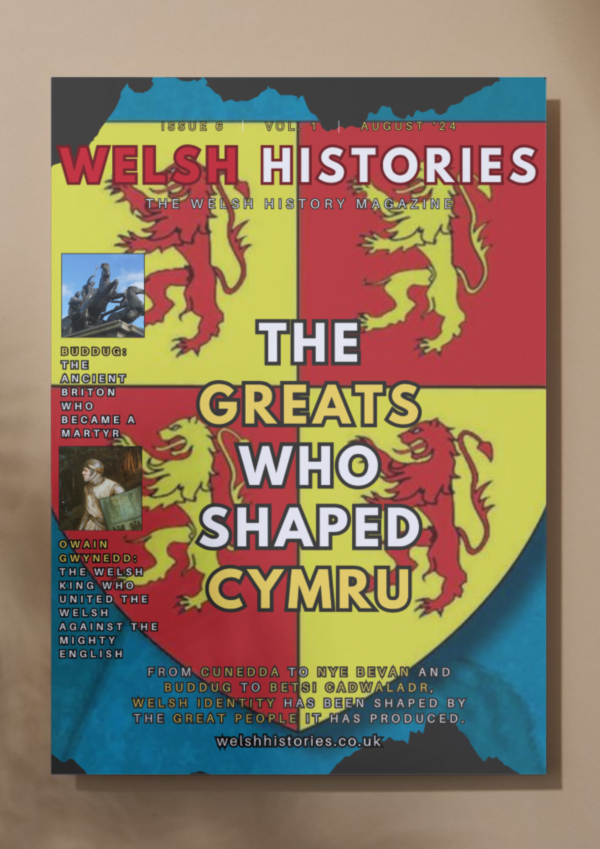Your basket is currently empty!
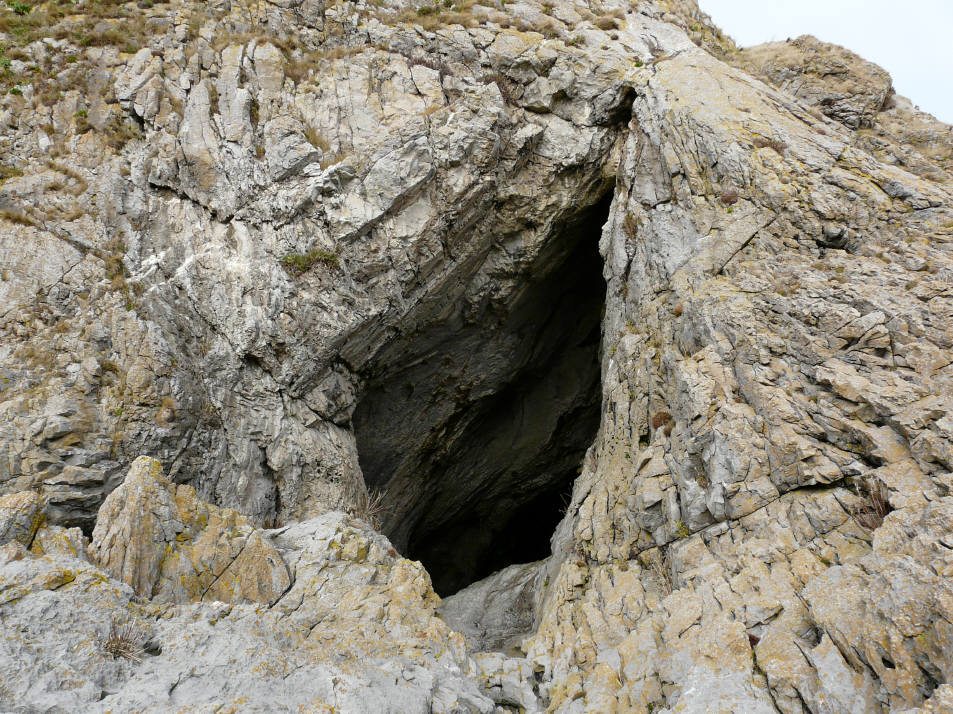
15+ Surprising Facts About Wales I Bet You Didn’t Know
I have created a compilation of ‘Did you know?’ facts about Wales, taken from Welsh Histories Facebook page. I bet some of it can probably surprise you!
#1. St. David’s Cathedral in Sir Benfro is the smallest city not just in Cymru but the whole of the United Kingdom.
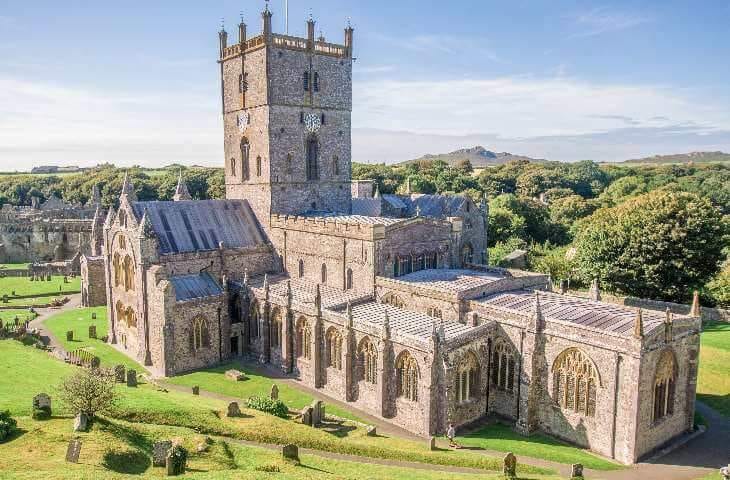
Despite its small size, St. David’s holds city status due to the presence of its magnificent cathedral, which has been a place of worship for over 1,500 years.
St. David’s Cathedral, named after Cymru’s patron saint, St. David, is a site of immense historical and cultural significance. It has been a site of pilgrimage for centuries and continues to draw visitors from around the world. The city’s charming atmosphere, coupled with the cathedral’s awe-inspiring architecture, creates a truly unique experience for all who visit.
#2. Every year in Bretagne (Britanny), there is an inter-Celtic festival called Emvod Ar Gelted An Oriant – a Celtic festival celebrating the multiple Celtic nations; their languages, traditions and music.
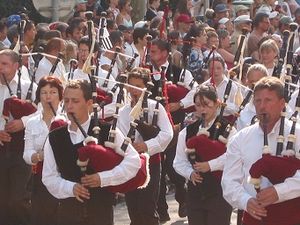
It is a ten day festival which has been in existence since 1971.
#3. If you have a good enough camera and the added bonus of an extra clear day, it is possible to see Eire (Ireland) from Cymru (Wales), and vice-versa.
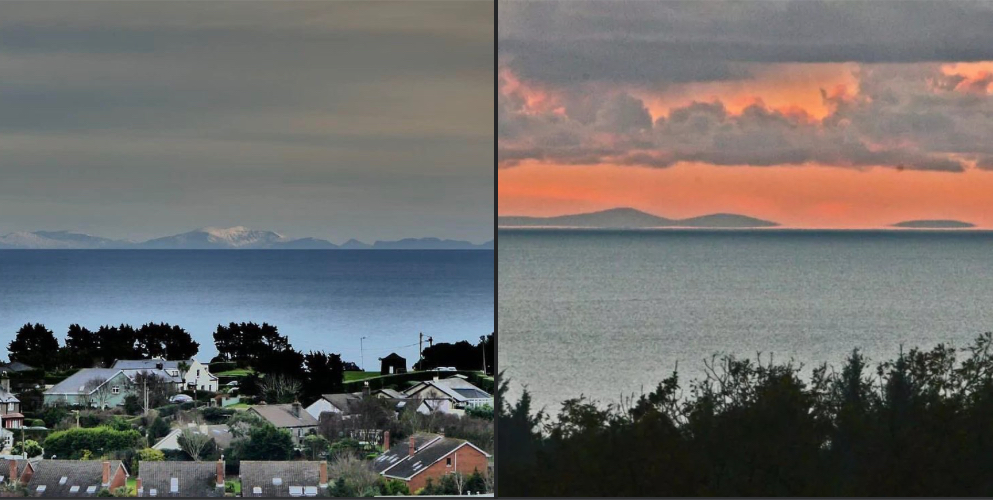
Yes, it is possible and yes, the images *are* real. At its shortest, the distance between Cymru and Eire is just 50 km (Llŷn Peninsula and the Wicklow mountains) and the image attached shows a distance of 140 km (Yr Wyddfa to Howth).
Eire and Cymru share a largely entwined history and when you realise how close the two nations are, it becomes easy to recognise why.
#4. The three countries with the most Cymraeg speakers are Cymru, England and Argentina.
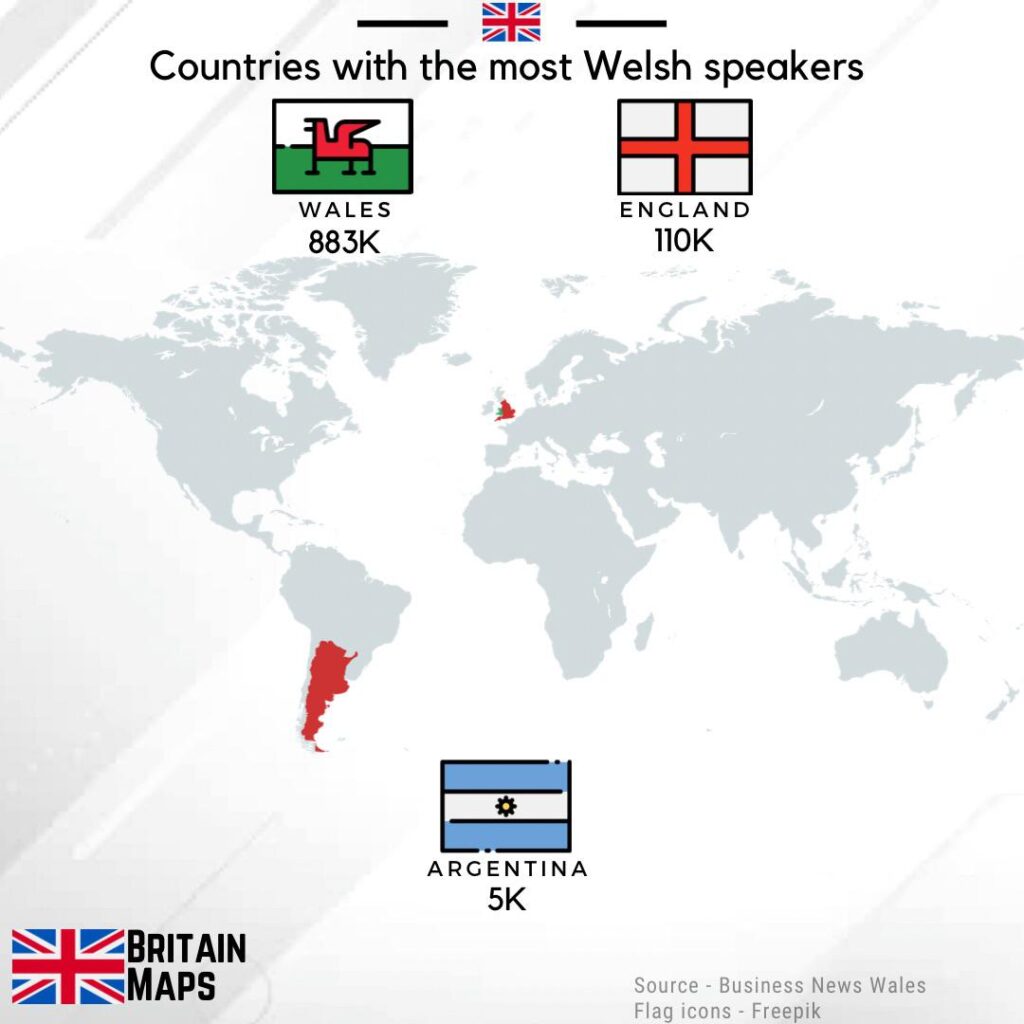
This number is ever-changing, however, and has likely done so since this map was made as more and more people around the world are learning Cymraeg.
Also, a fun fact: Cymraeg is often used by the British military as code during times of war (especially in World War II, where it was used to shield conversations from Nazi espionage). In the Falklands War, this tradition was dropped because of the thousands of people native to Y Wladfa in Argentina.
#5. Cymru only has one skyscraper.
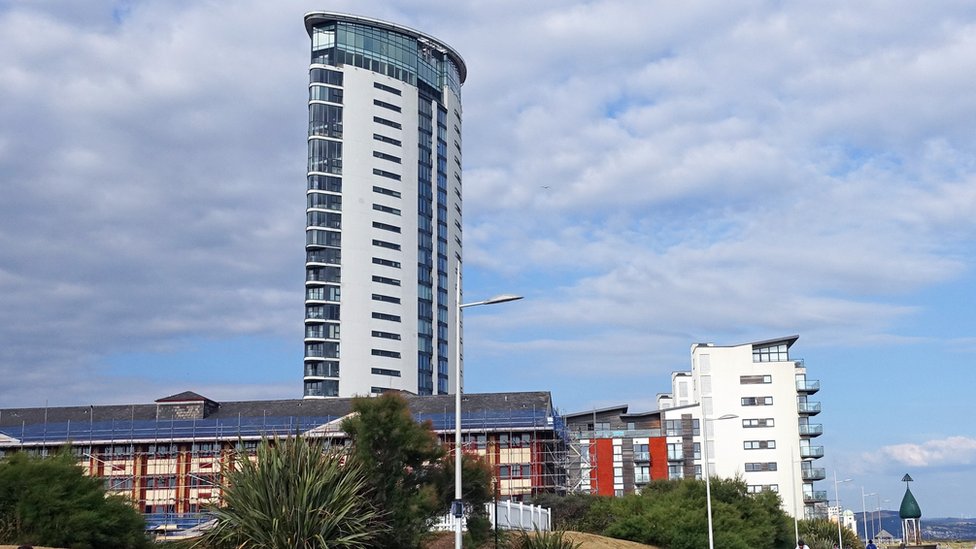
The Tower, Meridian Quay, Abertawe (Swansea), is a residential building which stands at 107 m (351 ft) tall, which puts it 7 meters over the necessary threshold to qualify as a skyscraper.
The tower has 29 storeys and was completed in 2009.
#6. The only surviving cast-iron lighthouse on the island of Great Britain is native to Cymru.
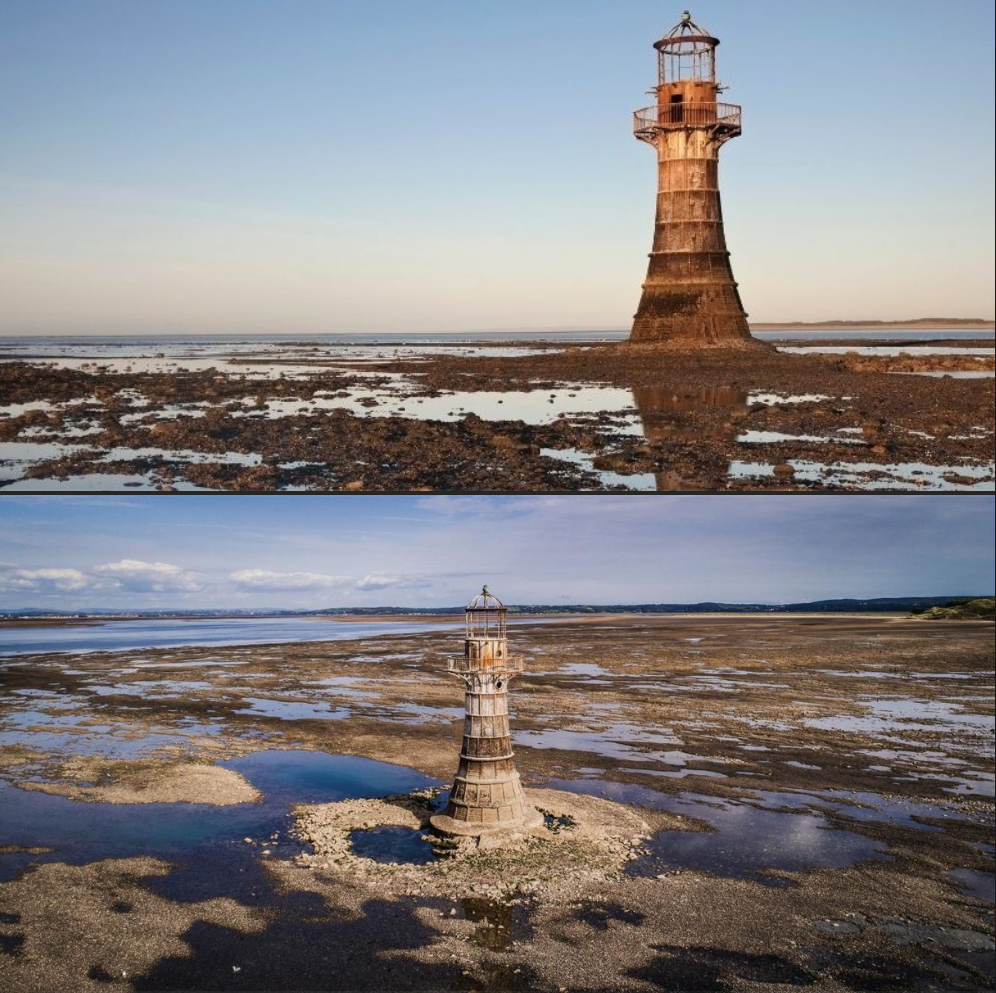
Now a Cadw Grade II listed building and Scheduled Ancient Monument, Whiteford Lighthouse is a short walk from the village of Llanmadoc, upon Whiteford Point near Whiteford Sands, on Gŵyr (the “Gower Peninsula”), De Cymru.
Walking from Llanmadoc will take you through the Cwm Ivy Nature Reserve – home to kingfishers, otters and many more wonderful animals native to our beautiful country.
#7. The common name for the world’s tallest mountain comes from a Welshman.
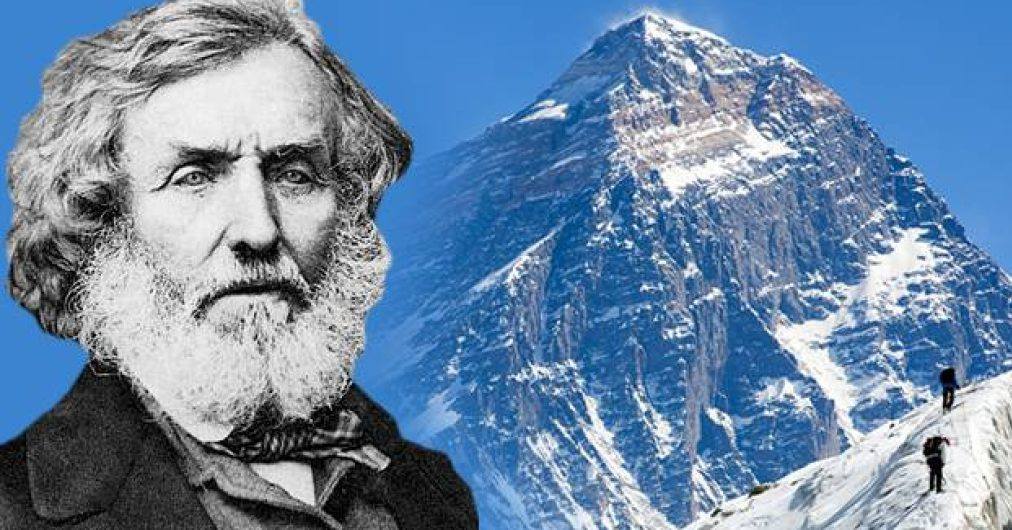
Whilst I prefer to use its native Nepali name, Sagarmāthā, the tallest mountain – commonly referred to in the west as “Mt Everest” – actually comes from the Welsh surveyor, George Everest (pronounced Eve-rest), who helped with mapping the mountain.
Everest actually opposed the mountain being named after him, instead preferring a native name as “Everest” cannot be written in Hindi.
#8. The Great Orme Mines in Llandudno, Gogledd Cymru, are believed to be the world’s oldest known mining site, dating back over 4,000 years.
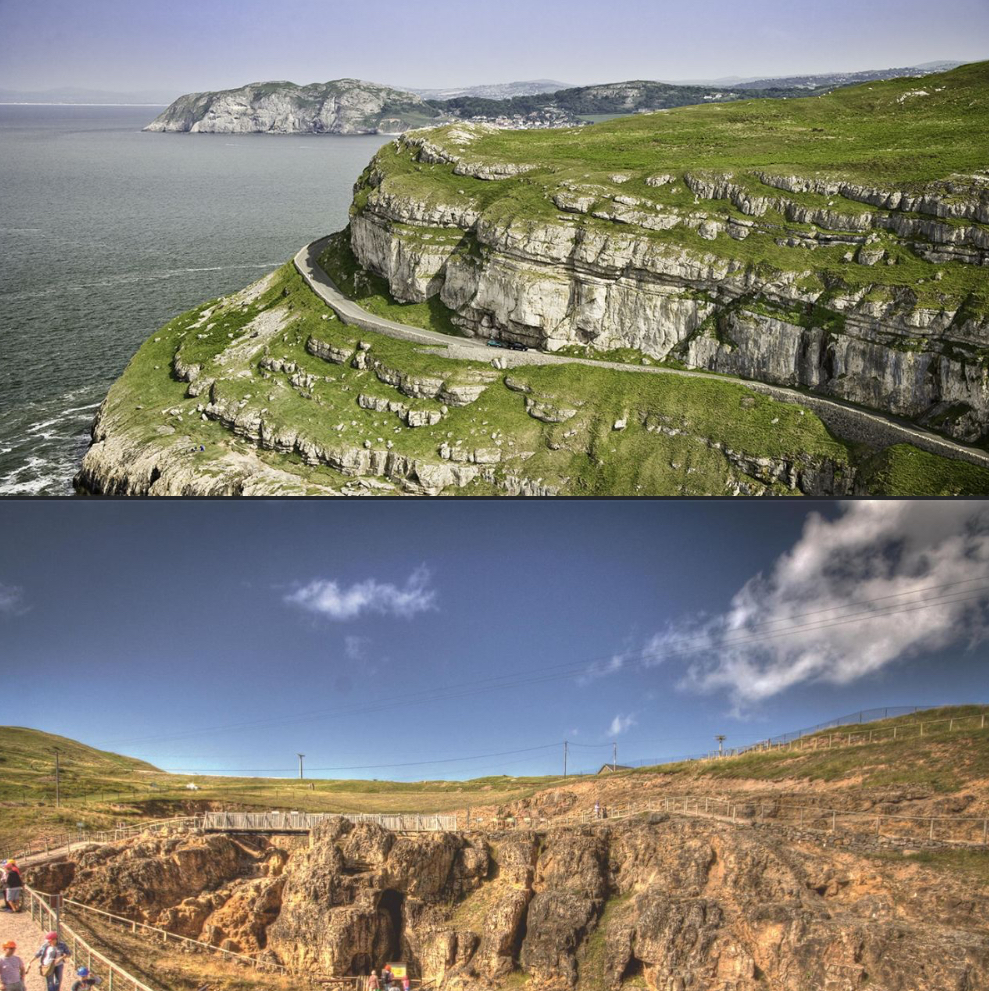
These ancient mines were primarily used to extract copper ore and have revealed a complex system of tunnels and chambers.
What makes this site truly remarkable is that it predates the Roman occupation of Britain, and the mining techniques employed by its early inhabitants were quite advanced for their time. The Great Orme Mines offer a fascinating glimpse into the ancient history of Gogledd Cymru.
#9. Cymru has four “Thankful Villages?” Llanfihangel y Creuddyn (Ceredigion), Colwinston/Tregolwyn (Glamorgan), Herbrandston (Pembrokeshire) and Tavernspite (also Pembrokeshire) are the four holding this unique distinction.
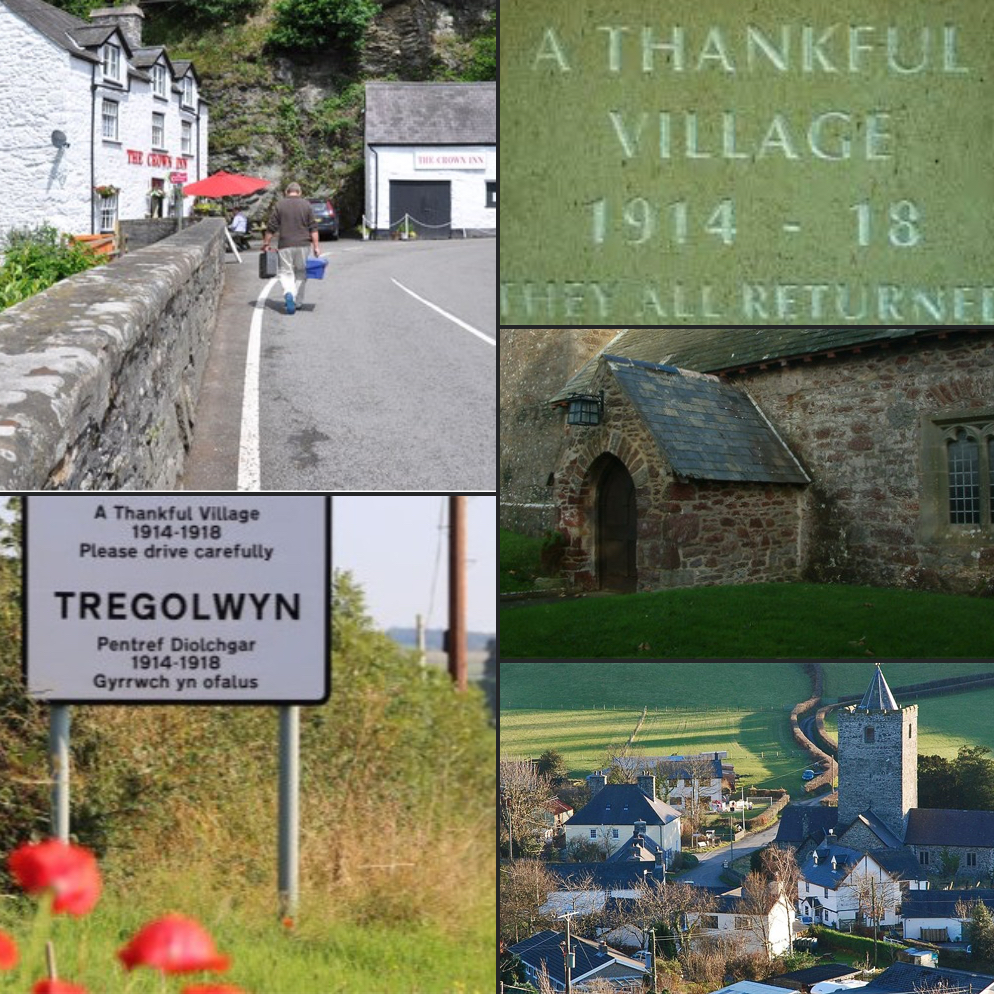
A “Thankful Village” is termed as such because it did not lose a single person during the First World War. Whether the village had men fighting in the war or not, it means that no one from the village perished in the war between 1914-1918.
Tavernspite is the only village to have the even more unique distinction of being a “Doubly Thankful” village – which means no one from the village died during the Second World War, as well!
#10. The famed A55 “Beep-Beep” tunnel between Penmaenmawr and Conwy in Gogledd Cymru is named as such in tribute to two builders who lost their lives during its construction? Well, that’s the unconfirmed rumour.
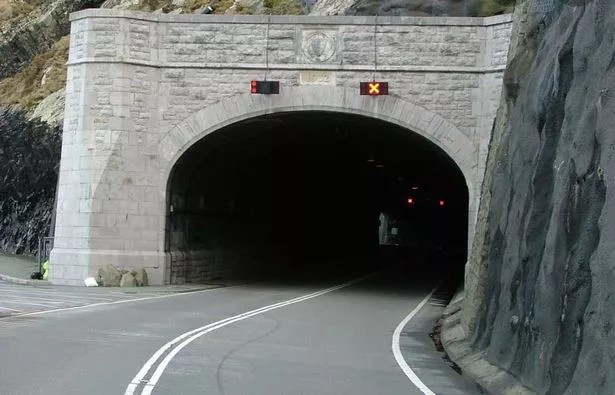
For those unaware, many drivers will honk their car horn twice in the tunnel and the two honks of the horn was supposedly originally done in tribute to the two workers, with one beep for each. Nowadays, many keep the tradition going whilst unaware of the actual history behind it!
#11.Cymru is home to the Bog Snorkeling World Championship? 
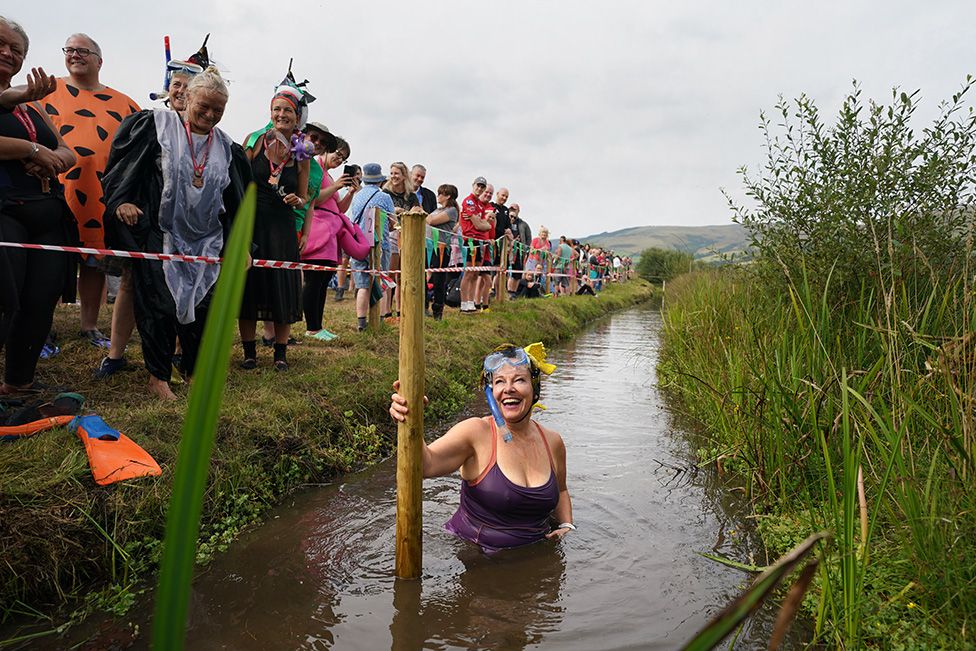
In fact, it was on this day (the 25th of August) in 1986 when the first World Bog Snorkelling Chamionship was held at the Waen Rhydd peat bog, near Llanwrtyd Wells.
It now takes place every August Bank Holiday.
#12. Henrhyd Waterfall in Bannau Brycheiniog was the scene of the Batcave from the Batman film The Dark Knight Rises?
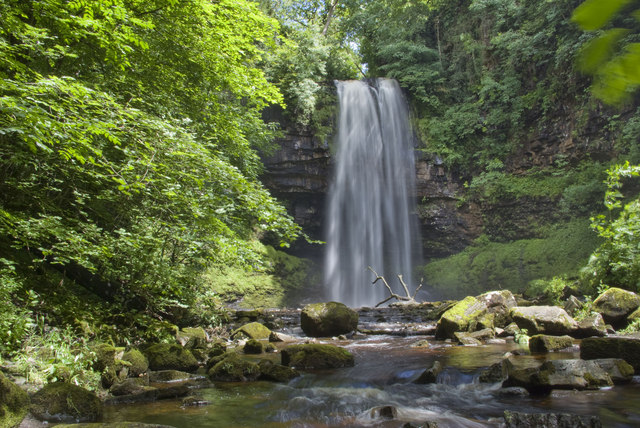
One of the many instances of Welsh natural beauty being used in a Hollywood blockbuster.
#13. Eleven United States Presidents had considerable Welsh ancestry.

John Adams, Thomas Jefferson, James Madison, James Monroe, John Quincy Adams, William Harrison, Abraham Lincoln, James Garfield, Benjamin Harrison, Calvin Coolidge and Richard Nixon all have enough Welsh ancestral roots to be termed “Welsh Americans”. Jefferson Davis, the leader of the Confederacy, was also of considerable Welsh heritage.
In fact, the Welsh diaspora was so strong in 19th Century America that there were 200,000 Welsh speaking citizens on the east coast and Presidents, most notably Abraham Lincoln, had campaign leaflets published in Welsh (pictured) to target their vote.
#14. Cymru is home to Paviland Cave – where the “Dynes” Goch Pafiland (Red “Lady” of Paviland) skeleton (which dates back to 33,000 BP) was discovered.

The cave is a limestone cave on the Gower Peninsula, not too far from Abertawe (Swansea). The Red “Lady” was misgendered as such and was believed to have been a relatively recent female skeleton, however, it has since been proven to have been the skeleton of a young man who was one of the original arrivals to Europe.
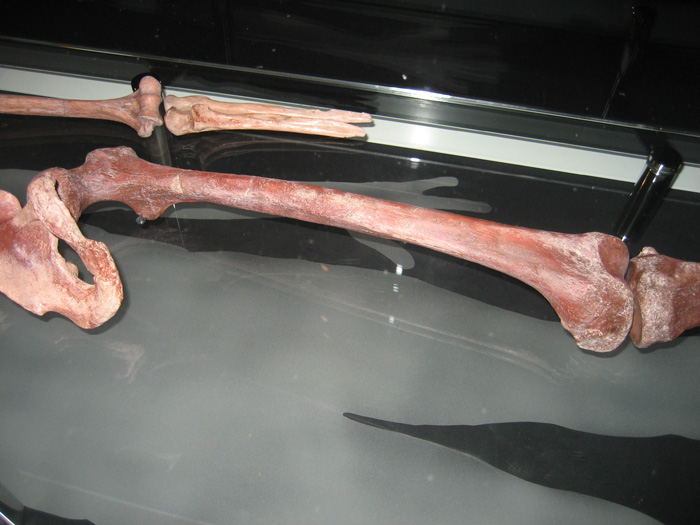
The skeleton was found covered in red dye (for preservation/burial purposes) alongside a woolly mammoth skull.
#15. The Welsh national anthem, Hen Wlad Fy Nhadau, has been adapted into the anthems of Kernow (Cornwall), Breizh (Britanny) and Y Wladfa (in Patagonia).
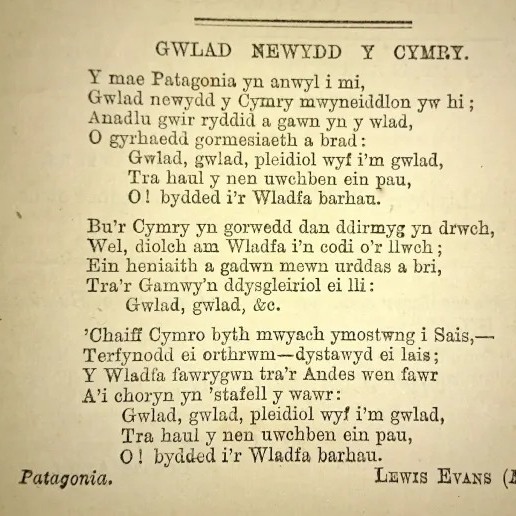
The Kernowek adaptation is titled “Bro Goth agan Tasow” and the English translation of the chorus is:
“Cornwall! Cornwall, we love Cornwall!
As long as the sea, may be as a wall around you,
We are one and all for Cornwall!”
As for Breizh, there’s is titled “Bro Gozh ma Zadoù” and the chorus, in English, is as follows:
“Brittany, my country, I love my country,
So long as the sea, like a wall surrounding thee,
My country shall be free!”
Lastly, Y Wladfa’s is titled “Gwlad Newydd y Cymry” and the chorus goes:
“Nation, Nation, I am faithful to my Nation.
While the sun rises above the land,
Oh! may the Settlement continue.”
So not only do we have arguably the best anthem but we share it with our closest cousins.
#16. The first female U.S. State Senator was from Llandudno.
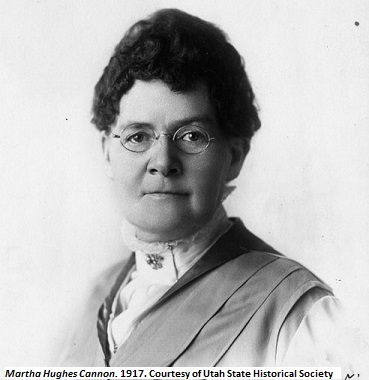
Martha Hughes Cannon (1857 – 1932), from Madoc Street, Llandudno, lived an extraordinary life. A suffragist, a physician, a Latter-Day Saint and State Senator for the State of Utah, after defeating her own husband in the election. She authored Utah sanitisation laws and was a founding member of Utah’s first State Board of Health.
#17. Wallace is a Scottish surname which stems from the Anglo-Norman French “Waleis”, which means “foreigner” and/or “Welshman.”
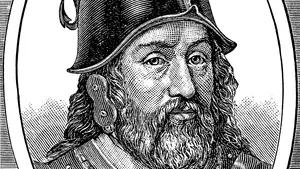
You know what this means?
We are claiming William Wallace for Cymru. Sorry, Yr Alba. ![]()
Write us your thoughts on [email protected]
Bestsellers
-
(UK ONLY) YEARLY Subscription Welsh Histories Magazine
£79.99 -
(US & CAN ONLY) YEARLY Subscription Welsh Histories Magazine
£129.99 -
DIGITAL COPY Welsh Histories Magazine – April 2024
Original price was: £2.99.£1.99Current price is: £1.99. -
DIGITAL COPY Welsh Histories Magazine – August 2024
£3.99
More from Welsh Histories
Welsh Histories is a Welsh history celebrating platform which looks to promote all aspects of Welsh history. Though we focus predominantly on native Welsh history, we do also share the non-native aspects from time to time. You can follow us on Facebook; Instagram or Twitter for more. A reader? We also have our very own Welsh Histories Shop where we sell our Welsh Histories Magazine. Diolch yn fawr iawn and keep enjoying Welsh Histories
Sally is a proud wife of a Welshman, editor & writer of Welsh Histories. She’s all about stories—that shout ‘anything Welsh.’ Drop her an email if you have an advice, insight, experience, or a story to share.
